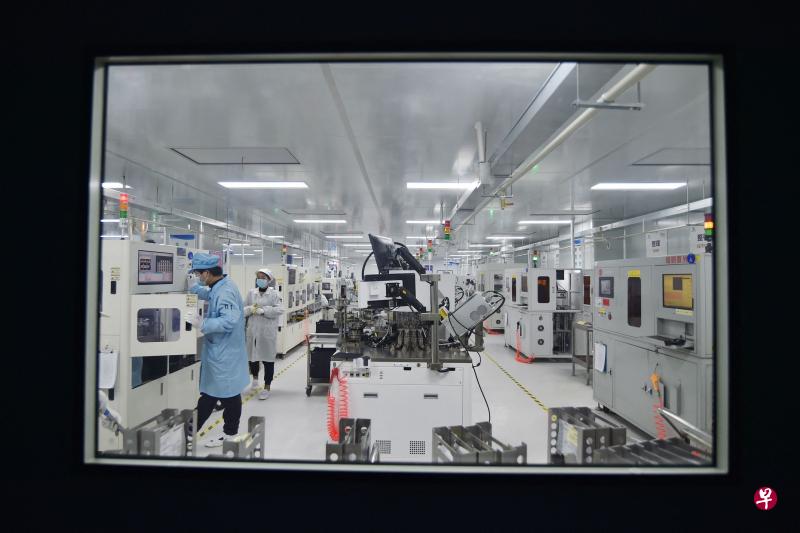
China ’s manufacturing procurement manager index (PMI) in February was 52.6%, an increase of 2.5 percentage points from last month.This number far exceeds the previous forecast of analysts, the highest level since April 2012.
(Beijing / Washington Comprehensive News) The latest statistics from China show that in February, manufacturing activities expanded at the fastest speed of more than ten years, showing that after China's cancellation of epidemic prevention and control policies, the manufacturing industry recovered rapidly.Economists are optimistic about China's economic recovery this year, and believe that the Central Bank of China will further launch a policy to consolidate the economic recovery.
The official website of the National Bureau of Statistics of China announced on Wednesday (March 1) that in February, the manufacturing procurement manager index (PMI) was 52.6%, an increase of 2.5 percentage points from the previous month.Comprehensive Luya Club and Caixin.com reported that this number far exceeded the previous forecast of analysts, the highest level since April 2012.
Non -manufacturing business activity indexes and integrated PMI output indexs were 56.3%and 56.4%, respectively, respectively, respectively, 1.9 and 3.5 percentage points higher than the previous month.The three major indexes have been expanded for two consecutive months.
In February Caixin China Manufacturing Purchasing Manager Index (PMI), which was announced on Wednesday, is consistent with official data, recorded 51.6, an increase of 2.4 percentage points from January.This survey is mainly small and medium -sized enterprises. The data recorded was the highest since July last year. It is also the first time since August last year higher than the critical point.
TheThe PMI index of the manufacturing industry has expanded for more than ten years, showing that after the cancellation of the restrictions on the epidemic, the production, supply and demand gradually resumed normal, and the economy showed a strong signs of rebounding.
Zhao Qinghe, a senior statistician of the Service Industry Survey Center of the China National Bureau of Statistics, said that the effect of China's stable economic policy and measures in February was further emerged, and favorable factors such as the influence of the epidemic affected.The level of prosperity continues to rise.
Zhao Qinghe also pointed out that although the situation of enterprise production and operation has continued to improve, the proportion of manufacturing and service companies that reflect insufficient orders in the survey still accounted for more than 50%.
Although this data has declined compared with last month, the problem of insufficient market demand is still relatively prominent. The foundation of China's economic recovery must be consolidated. The follow -up trend of PMI still needs to be further observed.
The opening of the National Two of China this weekend will set the economic growth goal this year
Capital Economics) Julian Evans-Prize-PritChard, the Chinese economic director, said that although the external expectations of China's economy will rebound rapidly in the short term, this year's economic growth will be higher than 5.5%Of the predictions may be too conservative, but he also pointed out that as the steps of recovery slower, the manufacturing PMI data may fall soon.
The National Two Associations of China will open this weekend. Among them, the National People's Congress will set this year's economic growth goals and elected the highest officials in charge of economic work.
Zhou Hao, chief economist of Guotai Junan, said that "the overall trend still shows that a stable recovery will occur in early 2023." Good PMI data will provide positive signals for the upcoming National People's Congress.Policies to consolidate economic recovery.
The prices of stock markets and goods in various places have been boosted on Wednesday by Chinese PMI data. The Asian stock market and the Australian dollar reversed the earlier decline. The offshore RMB strengthened and oil prices rose.The Hang Seng Chinese Enterprise Index, which tracked the Chinese company listed in Hong Kong, rose 5.1%, while offshore RMB increased by 1%.


